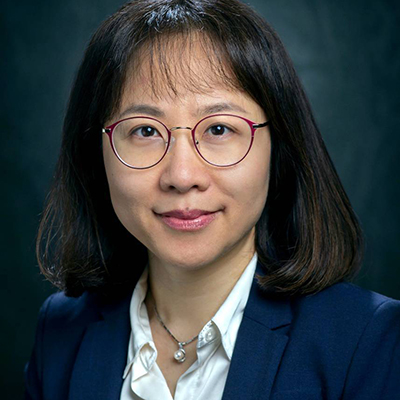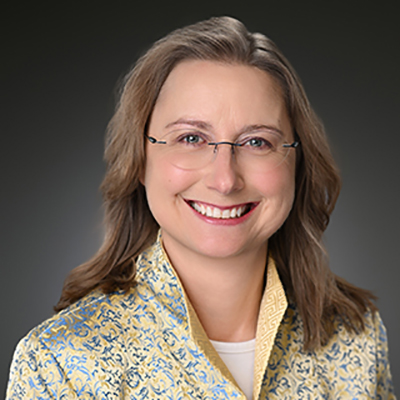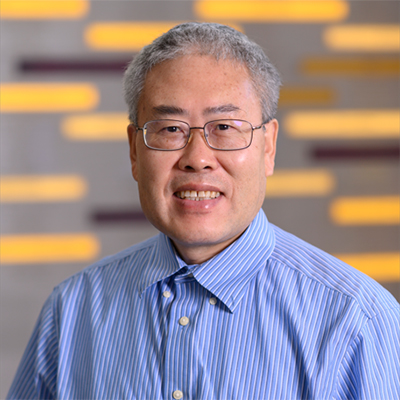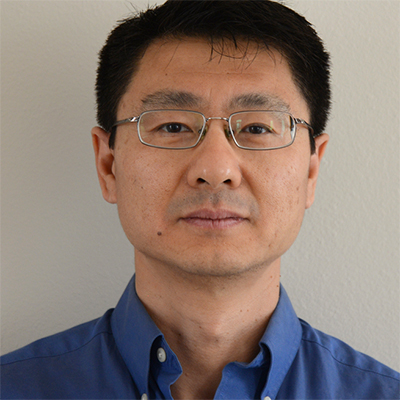Researcher Testimonials
LSU researchers who are frequent AMAC users talk about some of the critical impacts the research core facility has had on their work.

SeYeon Chung, associate professor of biological sciences
“Microscopy is key for our research. Using AMAC’s confocal, spinning disk, and electron microscopes, we discovered the dynamic behavior of cytoskeletal networks and the organization of the apical extracellular matrix during epithelial tissue formation and won over $1 million in federal research awards.”
Understanding cell growth, cell shape changes, and organ formation.

Stephania Cormier, professor of biological sciences and respiratory immunology with joint appointments in the LSU College of Science and LSU’s Pennington Biomedical Research Center and director of the LSU Superfund Research Program
“The transmission electron microscope imaging we did at the AMAC facility enabled us to do a detailed assessment of mitochondrial morphology in lungs exposed to environmentally persistent free radicals, the core focus of the LSU Superfund Research Program, which has been funded by the National Institutes of Health with over $25 million to date. The facility’s technical excellence and outstanding support were instrumental in generating high-quality data, advancing our understanding of sex-specific responses to environmental exposures.”
Exploring respiratory immunology and toxicology, with a focus on how environmental exposures, such as air pollutants and viruses, impact a person's immune system and lead to respiratory diseases.

Kunlun Ding, associate professor of chemical engineering
“In 2018, we published a paper in Science describing a new method for synthesizing supported bimetallic catalysts. This research heavily involved the transmission electron microscope and X-ray photoelectron spectroscope in the AMAC, helping to reveal the crucial surface chemistry. More recently, these capabilities enabled us to win $1 million in National Science Foundation funding.”
Solvent-free depolymerization of plastic waste. Catalysts for selective hydrogenation reactions.

Manas Gartia, associate professor of mechanical engineering and fellow of the National Academy of Inventors
“AMAC’s cutting-edge instrumentation, particularly the Raman microspectroscopy system, has been instrumental in enabling spatially resolved chemical imaging of biological samples at the cellular and tissue level. This helped us secure a $1.875 million Maximizing Investigators’ Research Award for metabolomics research from the National Institutes of Health in 2023.”
Multilayered graphene. Optical sensors. Multimodal imaging of the pancreatic cancer microenvironment.

Shengmin Guo, professor of mechanical engineering
“Sustainable, long-duration human spaceflight missions require on-demand manufacturing capabilities that provide solutions for fabrication and repair of components, electronics, consumables, tools, and structures. Thanks to AMAC instruments, our research group was able to build a comprehensive database of the thermal and physical properties of metallic additively manufactured materials with competitive funding from NASA.”
New alloys. Advanced manufacturing methods. Rapid qualification of additively manufactured safety-critical components.

Gouqiang Li, professor of mechanical engineering
“The AMAC has been very important in my research. We have used Raman, SEM, TEM, and XPS to characterize our polymers and polymer composites, which helped us publish numerous journal papers and several books, and receive 20 U.S. patents.”
Phase-changing material composites for harvesting electrical energy. Self-healing polymers and shape memory polymers. Artificial muscles made of shape memory polymer fibers.

Wen Jin Meng, professor of mechanical engineering and fellow of the National Academy of Inventors
“Our research group has been an active user of the AMAC facility since its inception. It has enabled first-of-its-kind experiments, furthering our understanding of mechanical integrity of solid-solid surfaces and micron-scale plasticity while advancing the methodology of micromechanical testing.”
Understanding the plasticity, failure, and functionality of materials.

Chris Marvel, assistant professor of mechanical engineering
“At AMAC, we used energy dispersive X-ray spectroscopy (EDS) to identify an alloy that is most amenable for MELD additive friction stir deposition. AMAC's capabilities have enabled multiple federal research grants, such as a National Science Foundation CAREER award and support from the Office of Naval Research.”
Enhancing material performance in defense, aerospace, and petrochemical applications. Corrosion-resistant coatings, high-performance bulk alloys, solid-state ceramics.